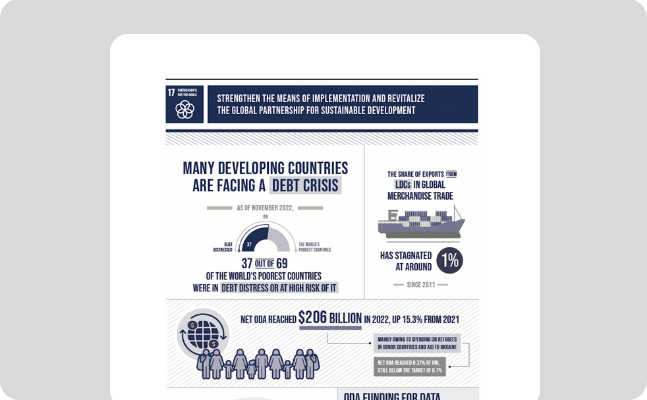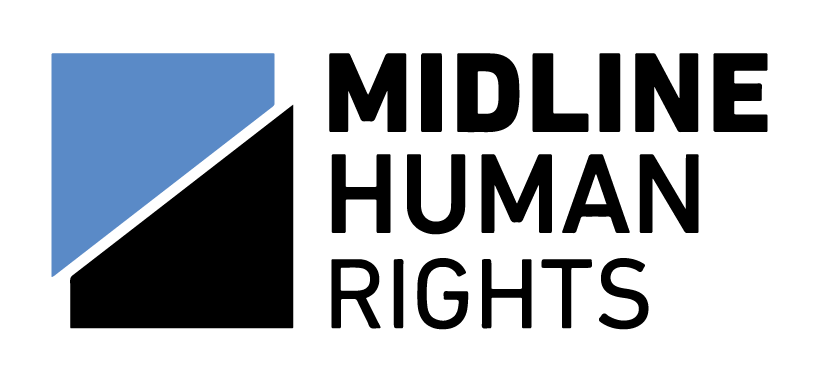Goal 17: Revitalize the global partnership for sustainable development
Goal 17 is about revitalizing the global partnership for sustainable development. The 2030 Agenda is universal and calls for action by all countries – developed and developing – to ensure no one is left behind. It requires partnerships between governments, the private sector, and civil society.
The Sustainable Development Goals can only be realized with a strong commitment to global partnership and cooperation to ensure no one is left behind in our journey to development.
However, not all countries are setting off from the same start line, and low and middle income countries are facing a tidal wave of debt which they are treading water.
Developing countries are grappling with an unprecedented rise in external debt levels following the COVID-19 pandemic, compounded by challenges such as record inflation, escalating interest rates, competing priorities and constrained fiscal capacity, underscoring the urgent need for debt relief and financial assistance.
While official development assistance (ODA) flows continue to reach record peaks, the increase in 2022 is primarily attributed to spending on refugees in donor countries and aid to Ukraine.
To be successful, everyone will need to mobilize both existing and additional resources, and developed countries will need to fulfill their official development assistance commitments.
Why?
In light of the consequences of the COVID-19 pandemic, we have seen that strengthening multilateralism and global partnerships are more important than ever if we are to solve the world’s problems.
Why does this matter to me?
We are all in this together. The Agenda, with its 17 goals, is universal and calls for action by all countries, both developed countries and developing countries, to ensure no one is left behind.
How much progress have we made?
Support for implementing the SDGs has been steady but fragile, with major and persistent challenges.
Financial resources remain scarce, trade tensions have been increasing, and crucial data are still lacking.
A growing share of the global population has access to the Internet, and a Technology Bank for Least Developed Countries has been established, yet the digital divide persists.
As partners, what would we need to do to reach this?
We will need to mobilize both existing and additional resources— technology development, financial resources, capacity building— and developed countries will need to fulfill their official development assistance commitments.
Multistakeholder partnerships will be crucial to leverage the inter-linkages between the Sustainable Development Goals to enhance their effectiveness and impact and accelerate progress in achieving the Goals.
How can we ensure the resources needed are effectively mobilized?
This will be primarily the responsibility of countries. Reviews of progress will need to be undertaken regularly in each country, involving civil society, business and representatives of various interest groups. At the regional level, countries will share experiences and tackle common issues, while on an annual basis, at the United Nations, the High-Level Political Forum on Sustainable Development (HLPF), they will take stock of progress at the global level, identifying gaps and emerging issues, and recommending corrective action.
What can we do to help?
Join/create a group in your local community that seeks to mobilize action on the implementation of the SDGs.
Encourage your governments to partner with businesses for the implementation of the SDGs.
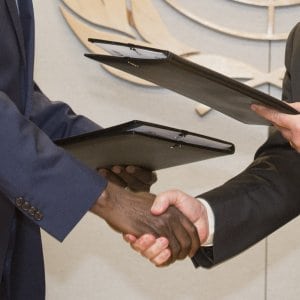
- Developing countries are grappling with an unprecedented rise in external debt levels following the COVID-19 pandemic, compounded by challenges such as record inflation, escalating interest rates, competing priorities and constrained fiscal capacity, underscoring the urgent need for debt relief and financial assistance.
- While official development assistance (ODA) flows continue to reach record peaks, the increase in 2022 is primarily attributed to spending on refugees in donor countries and aid to Ukraine.
- Despite a 65 per cent improvement in Internet access since 2015, progress in bridging the digital divide has slowed down post-pandemic. Sustained efforts are required to ensure equitable access to the Internet for all.
- Geopolitical tensions and the resurgence of nationalism hinder international cooperation and coordination, highlighting the importance of a collective surge in action to provide developing countries with the necessary financing and technologies to accelerate the implementation of the SDGs.
- In 2022, an estimated 66% of the world’s population (5.3 billion) used the Internet, compared with 40% (3 billion) in 2015. Globally, 259 million more men than women used the Internet in 2022.
- International funding for data and statistics amounted to only $541 million in 2020, a decrease of more than $100 million and $138 million from funding levels in 2019 and 2018, respectively. Between 2018 and2020, ODA funding for data dropped by more than 20%.
- The total trade of tracked Environmentally Sound Technologies (ESTs) in 2020 was $2,364 billion, an increase of 5% since 2015.
Source: The Sustainable Development Goals Report 2023
Fast Facts:
Partnerships
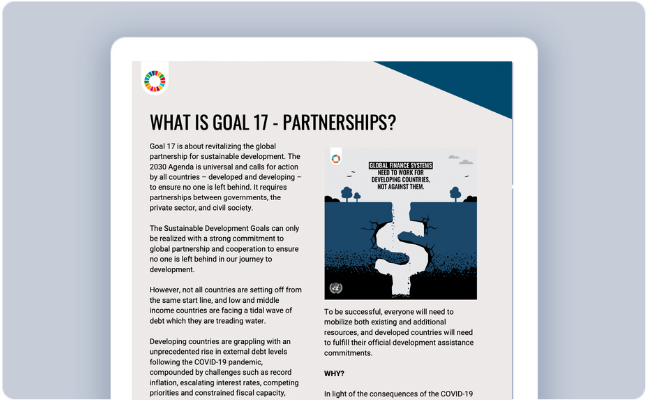
Infographic:
Partnerships
